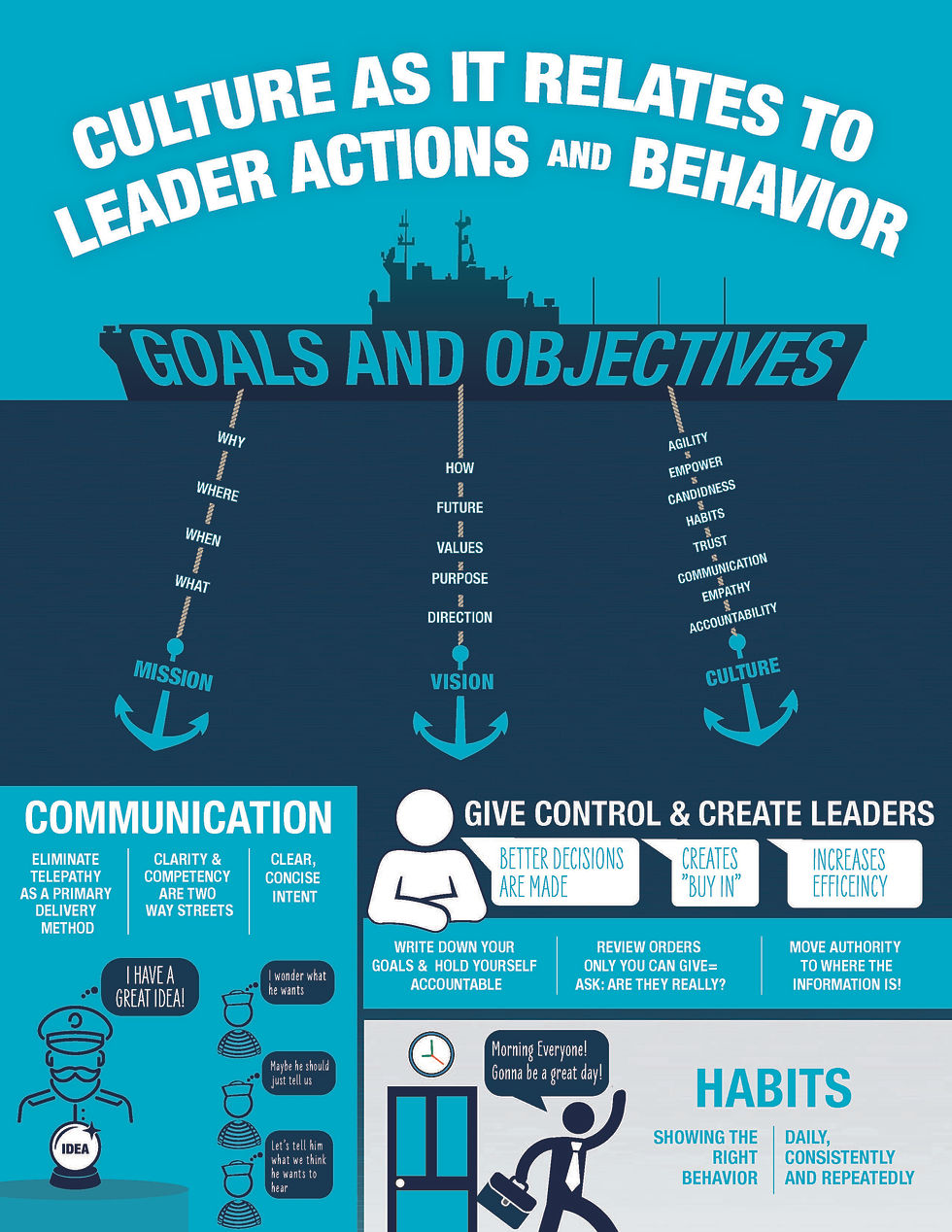CULTURE AS IT RELATES TO LEADER ACTIONS AND BEHAVIOR
- Jennie Meier
- Feb 28, 2022
- 2 min read
Updated: Jun 10, 2022
Dynamic Leadership Discussions
LSDS recently hosted a conversation between Terry Peters and Strategic Leadership Team Director, COL(R) Brad Moses, to discuss a topic on many minds: Culture as it Relates to Leader Actions and Behavior.
The key take-aways and best practices from Terry and Brad's conversation are summarized below. Click here to listen to the full recording.
Interested in participating in the upcoming live Q&A session? Send your questions about the topic below, or anything else on your mind, to ops@lsds.us to be selected for this next engagement.
Host: Brad Moses
Guest: Terry Peters
Terry Peters is uniquely qualified to discuss the importance of leader behavior and actions and the impact they have on organizational culture. Prior to founding LSDS in 2011, Terry had a 27 year career in the US Army where he led from the individual to large force level in some of the most austere and demanding assignments. He concluded a successful career as the Combined Joint Special Operations Task Force-Afghanistan Sr. Enlisted Leader while dually serving as the 3rdSpecial Forces Group Command Sergeant Major. As the Chief Executive Officer of LSDS, Terry currently leads a team that leverages expertise to help others achieve their goals.

Key Take-Aways for Culture as it Relates to Leader Actions and Behavior with Terry Peters
Define organizational goals and objectives and how they are anchored – mission, vision, and culture
Determine your own goals and objectives and hold yourself accountable
Review orders only you can give
Move authority to where the information is
**This process requires leadership, talent, experience, and knowledge***
What are some best practices Terry Peters highlights for leader actions and behaviors positively impacting culture?
1. Eliminate telepathy as the primary delivery method.
2. Clarity and competency are a two-way street – your communication techniques need to adjust to your audience.
3. Be clear, concise, and consistent in all communication.
4. Leader habits are a demonstrated method of communication – showing the right behavior daily, consistently, and repeatedly is a critical component of communication.

Comments